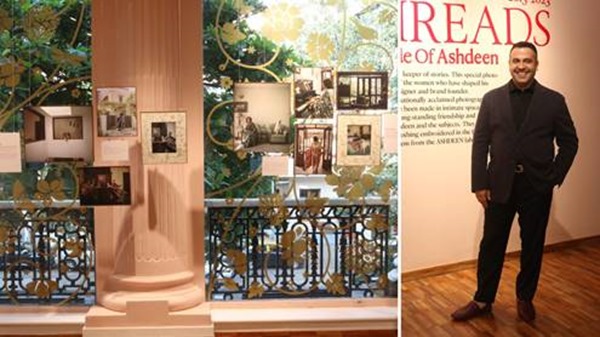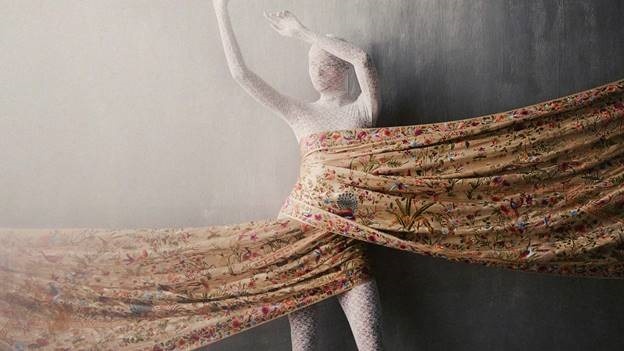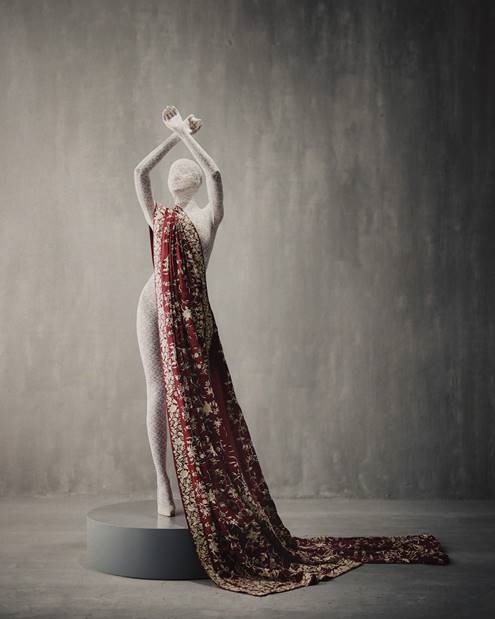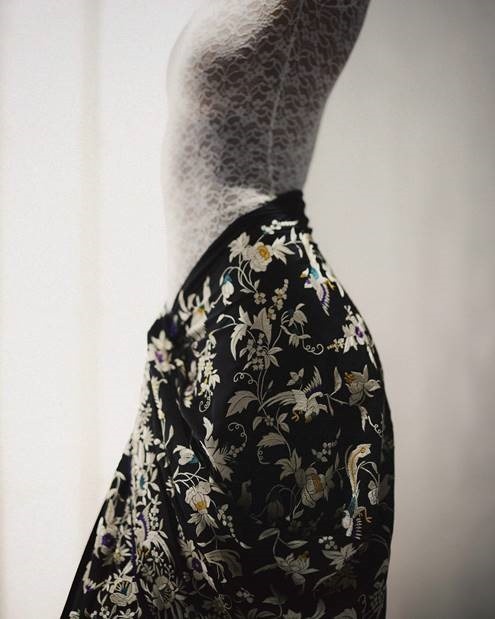Ashdeen’s latest collection is called ‘The Birth of Venus’
Article by Surbhi Shah | New Indian Exprss
Designer Ashdeen Lilaowala recently celebrated a milestone of 10 years as a Parsi Gara revivalist. We talk to Ashdeen about his journey in the fashion industry, his tribute to his decade’s work in the form of a picture exhibition called Threads: A Decade Of Ashdeen, his latest collection, the future of fashion in India and more…
Tell us more about ‘Threads: A Decade Of Ashdeen’.
More than a designer, I see myself as a keeper of stories. To celebrate the important milestone of completing 10 years, I wanted to do it in my own distinct style. That’s how the idea of Threads: A Decade Of Ashdeen came about. I wanted it to be a celebration of the intricate web of relationships that have defined my work, mirroring the intricate Parsi Gara embroidery tradition which is at the heart of this brand. It’s also an ode to my team of skilled craftspeople without whom we couldn’t have completed this milestone successfully.
A piece from the collectoion ‘The Birth of Venus’
How do you think this industry has evolved over the past 10 years?
I have always maintained that I am a textile designer, researcher and storyteller. As a result of that, I have been at the periphery of the fashion industry and that positioning has helped me always march to the beat of my own drum, as cliched as that sounds. We’ve been blessed to receive patronage from people not just from the community but across the country and the world. The industry has become quite saturated but there’s surprisingly still space for people who are doing different things and doing them differently.
Tell us more about your latest collection, The Birth of Venus. What’s the story behind the name and how does it translate to the pieces?
Our latest collection was named after the classic painting The Birth of Venus by Renaissance master Sandro Botticelli. One interpretation is that it casts the central figure Venus as the parallel to the earliest woman ‘Eve.’ It’s our nod to Zoroastrian cosmogony as well, according to which Mashya and Mashyana were the first man and woman to have walked the earth. In a similar vein, we’re going back to the Gara’s origins and examining it against a blank canvas. We’ve revisited original embroidery designs from the Parsi Gara lexicon. It’s a sari collection featuring lush floral tapestries and borders. All hand-embroidered in rich colour palettes our clients have always loved — emerald greens, muted greys, blacks, mango yellows and other gorgeous shades that are perfect for the festive and wedding season.
What made you stay connected with your work and the age-old but exquisite Parsi-style embroidery?
I enjoy the challenge of pushing the Parsi Gara tradition in new directions while making sure we stick to the basic framework. This has taken years of research into how the Gara has evolved over the years with the myriad geographical and cultural influences it has imbibed. I find it thrilling to be part of the next frontier of the Gara incorporating new nuances every season, telling new stories and sparking new conversations.
Are you planning to expand your label’s demography?
We’re already quite fortunate that younger people are increasingly interested in the brand. To get younger generations of sari wearers and textile enthusiasts interested in the craft, our brand has been experimenting with newer colour palettes, lighter fabric and motifs adapted to suit contemporary tastes. In addition, we have also opened out the embroidery applications placing them on lehengas, blouses, jackets, scarves and accessories to enhance the wearability factor. We also do this through styling explored through campaign imagery, shoots and collaborations with style makers and influencers.
Why and how did you enter the world of fashion?
As mentioned earlier, I see myself as a textile designer staying only in the periphery of the Indian fashion industry. Sure, overlaps exist and I enjoy them immensely. We even showcased at some seasons of Lakme Fashion Week. But I love staying true to my path and pushing the boundaries of the Parsi gara craft. I graduated in textile design from the National Institute of Design, Ahmedabad. After graduating, I travelled across India, China and Iran with the UNESCO Parzor Foundation documenting the Gara. I got a chance to interact with people’s personal collections in these geographies. The exercise has helped me understand the core essence of the Gara and as much as I innovate with the craft, I don’t waver from its core essence.




